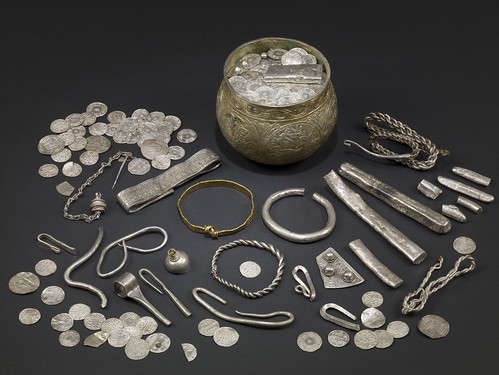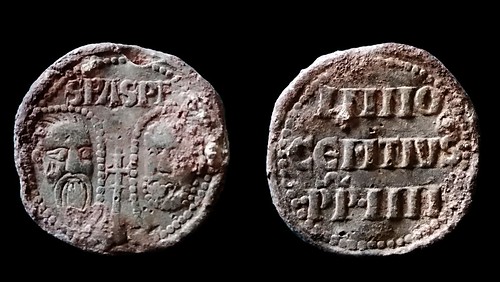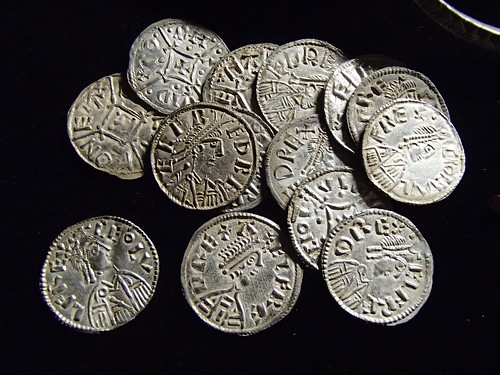
PREV ARTICLE
NEXT ARTICLE
FULL ISSUE
PREV FULL ISSUE
PORTABLE ANTIQUITIES SCHEME HITS 1.5M OBJECTSThe British Museum's Portable Antiquities Scheme (PAS) announced a new milestone this week - 1.5 million objects have now been recorded. -Editor 
Vale of York Hoard The British Museum's Portable Antiquities Scheme (PAS) was first set up in 1997 so that archaeological objects found by the public can be voluntarily recorded to help advance our knowledge of past. It reached 1.5 million object records on Wednesday. The item that helped cross this historic milestone was a medieval lead papal bulla (a seal for authorising papal documents, such as edicts and indulgencies) of Pope Innocent IV (r.1243-54), that was found in Shropshire. All the discoveries on the PAS database since its inception 23 years ago have been made by members of the public. Most of them are found buried in the ground by metal detectorists. Thanks to the public's efforts, including those made through responsible metal-detecting, our understanding of past communities living in Britain over thousands of years has radically improved. Many individual finds have transformed what we know almost overnight and have become some of the most famous historical objects in the UK, such as the gold treasures of the Staffordshire Hoard. Most objects that are unearthered are kept by the people who find them, but a number of discoveries are so important to the history of the life in Britain that they have been acquired or displayed by museums for the public to enjoy. But all the information recorded on the PAS database is freely available to anyone, and is used by students, scholars, researchers and the public alike. 
Papal Bulla To celebrate this important milestone, the British Museum with BBC History Magazine today also reveal 10 discoveries by the public and recorded on the PAS which experts have judged to have most transformed our knowledge of the past. These include a silver-gilt badge in the shape of a Boar found near the site of King Richard III's death in battle, and the discovery of thousands of Roman 'grots' – worn-down coins – which has reshaped our understanding of Roman Britain. The full list can be seen in this month's edition of BBC History magazine. There is a large diversity amongst the 1.5 million discoveries. They range in size from vast coin hoards – the biggest was the Frome Hoard of 52,500 coins – to one-of-a-kind single pieces such as the 3,500-year-old Ringlemere Cup. The oldest items include prehistoric-worked flint from 700,000 years ago; the youngest include 20th-century military badges. Recorded finds include arrowheads, axes, beads, brooches, buckles, coins, combs, finger-rings, gaming pieces, knives, sculpture, spindle whorls, tokens and vervels. 
Watlington Hoard
To read the complete press release, see:
To visit the Portable Antiquities Scheme website, see:

Wayne Homren, Editor The Numismatic Bibliomania Society is a non-profit organization promoting numismatic literature. See our web site at coinbooks.org. To submit items for publication in The E-Sylum, write to the Editor at this address: whomren@gmail.com To subscribe go to: https://my.binhost.com/lists/listinfo/esylum All Rights Reserved. NBS Home Page Contact the NBS webmaster 
|